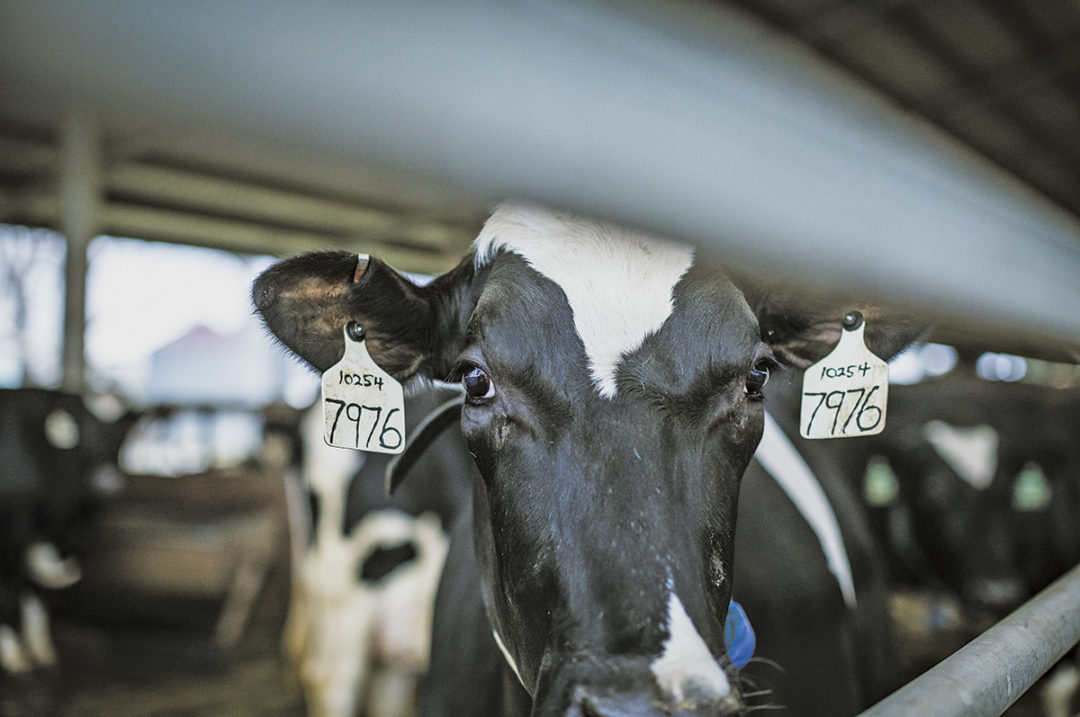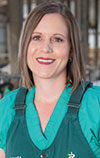When we look at farm profitability, we know that reproduction is a critical component. If cows get pregnant on time, they produce more milk, have shorter calving intervals and give birth to more replacements.
There are numerous factors that contribute to a great reproductive program, but success often boils down to focusing on the cows, the people and the science.
The cows
Achieving a pregnancy requires keen attention to the overall health of the cow, especially during the dry and fresh periods. Look closely at the following health components with your veterinarian or nutritionist:
-
Stress management. Stress can come in many forms, such as overcrowding, poor nutrition and improper handling. Fresh cow problems, including ketosis, metritis, mastitis and displaced abomasum, often stem from stress and can hinder reproductive performance.
-
Cow comfort. A key piece of providing a stress-free environment is prioritizing comfort. Strive to provide your herd with adequate feedbunk space, a proper stocking density, ample bedding, limited pen moves and a clean environment.
-
Nutrition. Dry cows need a sufficient amount of energy, protein, vitamins and minerals in their diet. After calving, fresh cows should be offered a balanced ration with high-quality forages, and feed should be accessible at all times to encourage dry matter intake (DMI).
- Fresh cow care. Immediately after calving, it can be difficult for cows to maintain calcium balance, making them vulnerable to fresh cow problems. Providing an oral supplement at freshening can help bolster blood calcium levels when it’s needed most.
The people
The people involved on a dairy operation are what separate good reproductive programs from great ones. For example: Let’s say you’re conducting a double Ovsynch program, and employees miss 5% of cows at each of the six injections. That may seem like a small margin of error, but by the time that protocol is complete, only about 73% of the cows will have received all of their injections. To ensure your staff is as compliant as possible, consider the following practices:
-
Train and re-train. Take the time to show employees exactly how you want things done, and explain what you’re doing. Have occasional refresher courses to remind the experienced workers of the correct procedures.
-
Help employees understand the “why.” Continuous employee education can increase job satisfaction and investment. People are more likely to continue established procedures if they understand why they are doing them.
-
Clearly post protocols. Pictures and diagrams are also good for clarification. Keep in mind that many farm employees have varying levels of education. Provide these procedures in the languages your workers speak to improve communication.
- Focus on feedback. Give feedback often, and acknowledge when people are doing things right. Treating employees fairly and with respect goes a long way.
The science
Over the last 25 years, we’ve made tremendous strides in our understanding of cattle reproductive physiology and how to create effective fertility programs. Having a basic understanding of the science behind these fertility programs, including the hormones used, will help ensure that protocols are followed properly. The major hormones used to synchronize cows enrolled in fertility programs are:
-
Prostaglandin (PG) – Toward the end of the estrus cycle, cows naturally produce PG, causing regression of the corpus luteum (CL), which has been producing progesterone during the middle of the estrus cycle. When this occurs, the dominant follicle will complete development and produce estrogen; then cows come into heat and ovulate. If PG is injected at the correct stage of the cycle, the same sequence of events will occur.
-
Gonadotropin-releasing hormone (GnRH) – GnRH is produced in a cow’s brain naturally and causes the release of other hormones important for follicular development and ovulation. When administered, GnRH causes either ovulation of the dominant follicle or formation of luteal tissue within the follicle, which will regress when PG is injected later.
- Progesterone – This hormone, produced by the CL, prevents heat and ovulation. Progesterone levels begin to rise after ovulation and are highest between days 6 and 16 of the estrus cycle. Administering PG during this timeframe will cause CL regression and a subsequent reduction in progesterone, which results in a cow coming into heat. If the cow is pregnant, the CL continues to produce progesterone to maintain pregnancy.
There are several synchronization protocols that require one or more of these hormones. Your veterinarian is going to be able to help you find the best protocol for your herd. When working with your veterinarian, create a protocol that is set up to:
-
Follow a 70- to 80-day voluntary wait period (VWP). Every herd has an ideal VWP, but increasing the VWP to 70 to 80 days in high-producing herds usually means a more fertile uterine environment.
-
Pre-synchronize cows. Nearly a quarter of lactating dairy cattle are not ovulating at 50 to 65 days in milk. This can be related to a negative energy balance in early lactation or health events such as retained fetal membranes or metritis. Pre-synchronization shots are a good way to get those animals started. Consider programs that utilize GnRH during pre-synchronization. GnRH can help get those problem cows to start cycling.
-
Prioritize heat detection. Heat detection is a critical component for early identification of cows that do not become pregnant following artificial insemination (A.I.). Make a protocol that includes routine, planned observation of heats either by visual detection or activity monitors.
- Focus on the small wins. It’s easy to feel overwhelmed when trying to implement a synchronization protocol. The key is to continue working with a veterinarian and trying to identify small wins. Sometimes, it’s as simple as buying a couple of tail chalk boxes and spending 20 or 30 minutes a day monitoring for heats.
There is no one-size-fits-all approach when it comes to selecting a fertility protocol. Each dairy needs to prioritize the cows, the people and the science of a reproductive program in a way that fits with their unique management.
References omitted but are available upon request. Click here to email an editor.










